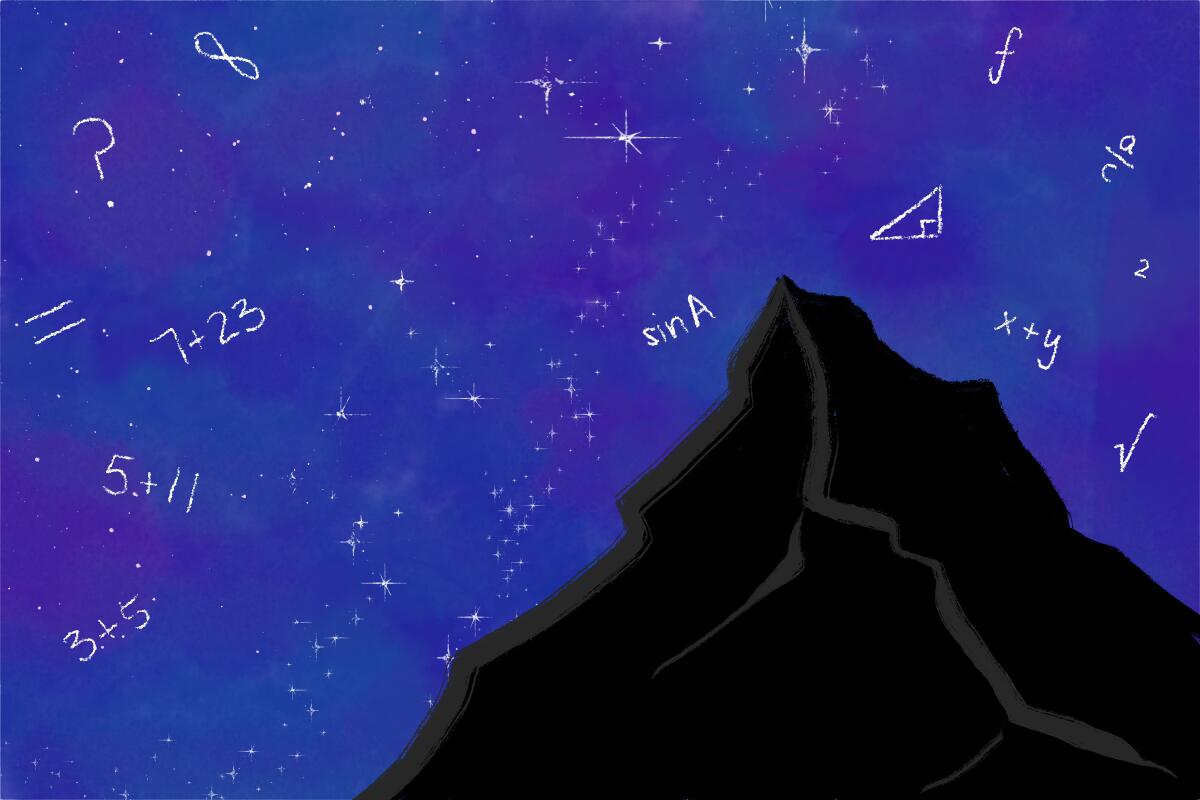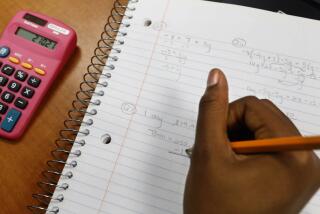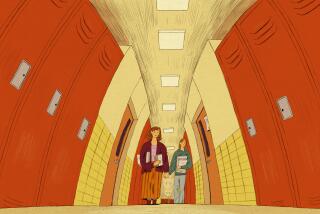Op-Ed: We learn to love math when we realize it’s not meant to be useful

August brings the usual dread of summer’s end and the imminent return to school, now magnified by the uncertainty of a COVID future and painful memories of the COVID past. As if the increased levels of anxiety and depression were not enough, new reports show our children are behind in mathematics, compared with where they would be after a normal year, with the sharpest declines experienced by the most vulnerable ones.
Math induces anxiety in kids, many lasting far into adulthood. As a mathematician, I constantly sense shame when people discover my profession. Pleasant introductions are followed by confession: “Forgive me, father, for I did not understand algebra.”
With parents having been responsible for a good amount of their children’s education last year, the thought of helping their kids struggle through another year seems overwhelming. This is compounded by the added pressure of knowing that math is the gatekeeper to science and technology that drive much of our society. After all, the power of mathematics has helped a rover to land on Mars, a computer to outthink chess masters, and a phone to navigate us around the world. And mathematicians have done a good job of showcasing these successes.
Ironically, this very feature of mathematics is its greatest weakness.
When our kids ask why they need to know algebra or trigonometry, we promise them that these tools will be useful. So, students hold their noses and drink math medicine that may help in their technological futures. Not only is this not true (I’ve never used algebra, much less trigonometry, in my daily life), it makes math dreary. Touting the usefulness of math for building spaceships makes one excited about the spaceships, not the math.
Do we listen to Coltrane because jazz is useful? Or immerse ourselves in a Rothko painting because of its practicality? The joy of food comes not from amino acids and proteins, but its look and smell and taste. Humans relish the practical, but we also know that there is much more to life. As Aristotle said, knowledge begins with wonder, but what wonder is there in algebra or trigonometry or calculus?
As it turns out, not much.
Like Beethoven, these mathematical ideas once were trailblazing, but that was centuries if not millennia ago. Yet they still form the cornerstone of today’s math education, designed to serve future generations. No wonder math induces boredom. We need Beyoncé math, not Beethoven math.
Happily, unlocking the pleasure of math is simple: Do what mathematicians do and seek out unexplored, unknown, undiscovered math.
Regrettably, the mathematical journey is imagined as a formidable mountain: The wide base is arithmetic, the skills of adding and multiplying, accessible to everyone. Climbing higher brings us to algebra, geometry, trigonometry and eventually calculus and beyond. (Many of us remember clearly where our bitter journey ended, when the ascent became too unbearable due to mathematical altitude sickness.) We believe that new math ideas have been all but exhausted, with a few remaining challenges tucked away in the highest peak.
In reality, math is alive and flourishing, and most of it remains a vast and uncharted countryside. Fresh ideas are constantly being discovered, opening up new and fascinating puzzles. These puzzles allow us to play at the very edge of the mathematical unknown, and many of them are accessible for our students.
Here’s one: Can every even number be written as a sum of two prime numbers?
Even numbers such as 8, 16, and 30 can be written as 3 + 5, 5 + 11, and 7 + 23. But can this be done for every even number? No one knows.
Here’s another: Can six 1-by-1 square tiles be arranged to cover a 2.01-by-2.01 square hole?
We can easily arrange four 1-by-1 tiles to cover a 2-by-2 hole, like on most bathroom floors. But if the hole was just a touch wider and just a touch longer, can arranging six tiles (we can overlap the tiles but not break them) be enough to cover the hole? No one knows.
On one hand, these puzzles might seem silly, with time better spent learning useful math. Yet it’s in prodigal extravagance, not utility, that the wonder of mathematics is found. And as our kids try to solve these problems (and miserably fail, as I have), a deeply encouraging truth will appear in their otherwise anxious hearts: It’s OK to struggle with math since everyone struggles with math.
For the full splendor of mathematics is so glorious, so majestic, that we are all children when it comes to exploring it. And these unsolved puzzles are the great equalizers, helping us realize that we are on the same level as the greatest of mathematicians, all of us staring over the unknown abyss, looking for a way down into the mystery. With a vacation from math utility, and into wonder, it might be possible to spark mathematical joy in our children in this COVID darkness as they begin a new school year.
Satyan Linus Devadoss is a fellow of the American Mathematical Society, recipient of two national teaching awards from the Mathematical Assn. of America, and professor of applied mathematics at the University of San Diego.
More to Read
A cure for the common opinion
Get thought-provoking perspectives with our weekly newsletter.
You may occasionally receive promotional content from the Los Angeles Times.










